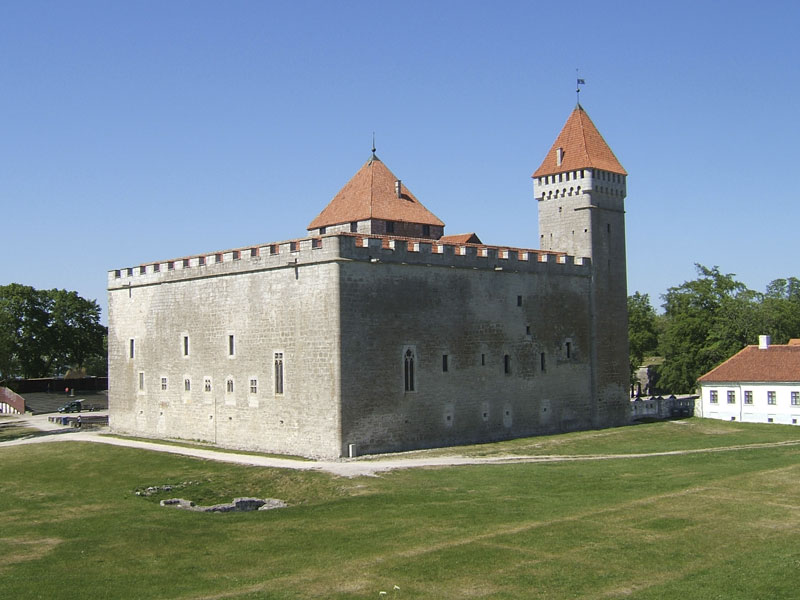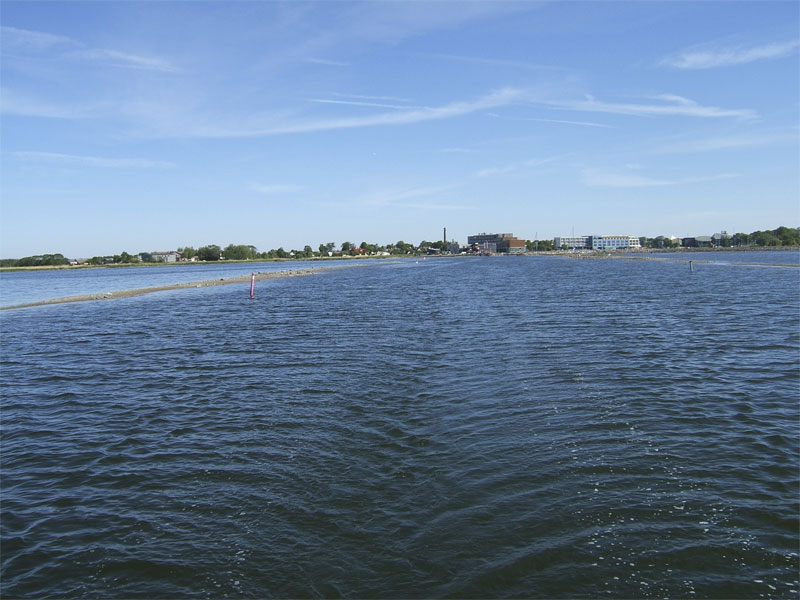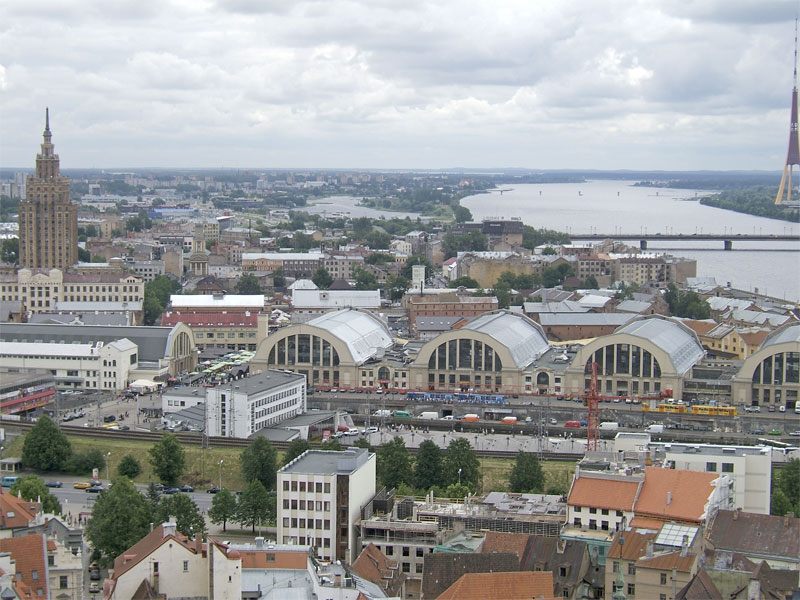
The Baltic States
Its hard to think that Estonia, Latvia and Lithuania have only been independent countries for the most recent 10 years of their long lives, and only members of the EU for two. As little as 10 years ago they were the 'front line' in the west's cold war with Russia - and it shows.
However now is an excellent time to visit, as the contrast between the new western style democracy, and the old centralised economy is still visible, and it is fascinating.
A lot of EU money is being pumped in to revitalise these countries and bring the infrastructure up to date, but as yet, the numbers of visitors by boat are still fairly low.
Boating is still a fairly elite pastime in the area, as the Russians forbade individuals to own boats, and for many, the cost is still prohibitive.
There is one of the great circular sailing routes here if coming from Sweden. Across to Ventspils, down to Riga, then north and up through the delightfully named Moon Sound, inside the islands round to Tallinn. Then a hop across the Gulf of Finland to Helsinki and return through the Finnish archipelago.
Sailing in the Baltic States
We only scratched the surface of these countries when we visited in 2006, and Estonia in particular would benefit from much more time (We plan to get back and do it properly soon, we liked it that much). Facilities vary, with a number of new marinas being constructed in Estonia. Latvia hasn't really caught on yet, except for Riga, where the large marina is itself under threat.
Despite all countries being in the EU, border guards are still active, (the Baltic States have not yet signed up to the Schengen Agreement) and so it is necessary to 'sign in' and 'sign-out' and you'll need plenty of crew lists. Despite this, the guards we found were friendly, if not particularly well versed in English. The harbourmasters we found to be exceptionally helpful and delighted to see some Brits.
Its possible to leave the boat in places like Riga if you have to return home. The marina has 24 hour security and Ryanair has cheap flights back to Stanstead. (Latvians all seem to applaud when the plane touches down safely...) However unlike Sweden, these countries do not seem to have 'unattended' rates for berthing which pushes the price back up a bit.
Needless to say, booze, food and fags are dirt cheap. Food can be rather stodgy and fat laden, but choose carefully and its OK and 'Caucasian' cuisine (kebabs) are fine. The larger towns (Riga, Tallinn) have a number of good restaurants, still at cheap prices, despite being touristy.
The best harbour guide for all three countries is Fay and Graham Cattell's Harbours of the Baltic States, available from the CA (and some local shops/marinas, as well as chart agents) and updated every year. There is also an excellent english Estonian Cruising Guide (written by Norwegians!). The waters around Estonia tend to be shallow, so you'll need the local charts.
See our 2006 Log for some more local colour and photos.
Estonia
Of the three countries, we think Estonia is the nicest destination for cruising yachtsmen, and also has the best facilities. The country has a number of offlying islands and small fishing harbours which make for interesting sailing. Only the Finns, who are no more than 50 miles away across the Gulf of Finland, seem to have discovered the country in any big way, and in some places the facilities are improving ahead of the crowds.
Tallinn is of course a major tourist destination. The old town is very prettily situated on a hill and relatively well preserved (don't miss the Olde Hansa restaurant with its Honey Beer) but the place is rather let down by the ramshackle market by the cruise terminal and the fact that the marina is a way out of town.
As mentioned above, the most popular route is north-south through the very shallow Moon Sound, but Pärnu and Kuressaare (reached by a 2 mile long dredged channel)are popular destinations in their own right. On Saaremaa you can hire an old jalopy for about £20 a day and drive round the island sightseeing. Kuressaree also has a spectacular castle with an interesting museum. The museum has a very good exhibition featuring life under the 'occupation' (first the Germans, then the Russians).
The island of Ruhnu, in the middle of the Gulf of Riga and surrounded by Latvia is a lovely little desert island with a small new marina. Its a beautiful place, its only drawback being a lack of restaurants. Tracks around the island are mostly soft sand, making cycling difficult.
Latvia
The capital city of Riga is, in our mind, the sole reason to visit Latvia. Of the three states, Latvia is the least set up for visiting yachts. The coastline is mostly plain, some would say glorious, sandy beaches which are delightfully un-commercialised, although the odd sewer outlet rather spoils the charm. (Blue flag status however...). The few ports that do exist are still struggling to make facilities for yachtsmen, although there is usually a pontoon or two.
Riga, however, is a delight, and for my money, much more interesting than Tallinn. The rickety tram system makes it easy to get across the city, however the centre is easily walkable from the marina.
Riga is an old Hanseatic town, and so the 'old town' is a very popular tourist destination with some stunning buildings, all having been restored (the Brits and Americans bombed the place to bits in the 1940s). Don't miss the 'House of the Blackheads' a 'no expense spared' restoration which now looks like an explosion in a fireworks factory. The sprawling 'new' part of the town has less heart, but it does have a wonderful selection of outrageous Art Nouveau buildings, only some of which have been restored.
The most active part of Riga is the huge Soviet style central market, down by the railway station. Part of this has very communist overtones, with huge numbers of stalls housed in what looks like old airship hangars, and manned by stern looking Slavic matrons. Outside there are literally hundreds of more stalls - it takes 10 minutes or so just to walk past flower sellers. Right next to all this is the modern steel and glass Stockmann department store, with its up market supermarket - quite a contrast.
Also in the city is a free 'Museum of the Occupation', documenting in quite harrowing detail life for the Latvians in the last century.
The tram will take you out to the city outskirts for the same flat fare. Here is the same contrast - vast mansions, some of which have been renovated and others just crumbling. Some of the most audacious are usually sited immediately opposite a crumbling communist tower block.
Ventspils is a handy port of call if arriving from Sweden. The marina is well protected, but suffers from being located in the fish dock, and the processing plant can be unpleasant if the wind is in the wrong direction. The town is clean, if a little unexciting, but the beaches and nearby parks are quite pleasant.
I would give Roja a miss - the nearby island of Ruhnu (Estonia) is more interesting, although the hotel's restaurant is pretty good.
Lithuania
Lithuania only has one port, Klaipeda, which we didn't visit, but we did go and see the capital, Vilnius, which is unfortunately some way inland. From our observations, of all the Baltic States Lithuania suffers the most from having its towns ringed with hundreds of ubiquitous soviet tower blocks, but stacks of cash are currently being spent doing up Vilnius (which has some interesting churches and a delightful main drag) and the country feels more prosperous than its neighbour. You decide.


